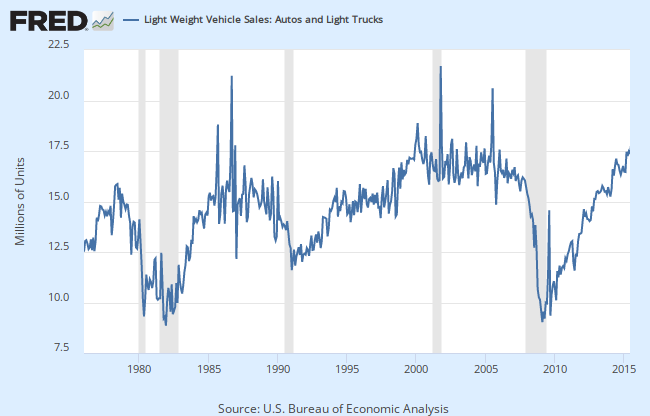Note: The charts below have been updated to include today’s preliminary report on U.S. Light Vehicle sales.
For the past few years we’ve been following a couple of transportation metrics: Vehicle Miles Traveled and Gasoline Volume Sales. For both series we focus on the population adjusted data. Let’s now do something similar with the Light Vehicle Sales report from the Bureau of Economic Analysis. This data series stretches back to January 1976. Since that first data point, the Civilian Noninstitutional Population Age 16 and Over (i.e., driving age not in the military or an inmate) has risen 62.2%.
Here is a chart, courtesy of the FRED repository, of the raw data for the seasonally adjusted annualized number of new vehicles sold domestically in the reported month. This is a quite noisy series, to be sure. The absolute average month-over-month change is 4.5%.

The latest data point is the preliminary October count published by Motor Intelligence, which shows a seasonally adjusted annual rate of 18.24 million units, a 0.4% increase from the previous month.
The first chart shows the the series since 2007, which illustrates the dramatic impact of the Great Recession. The blue line smooths the volatility with a nine-month exponential moving average suggested by my friend Bob Bronson of Bronson Capital Markets Research. The moving average reduces the distortion of seasonal sales events (e.g., Memorial Day and Labor Day weekend) and thus helps us visualize the trend.

Here is a the complete series data from 1976. We’ve added a linear regression (the red line) is added to further illustrate the direction of the long-term trend.

In the chart above, the latest moving average value is 1.4% below its record high in 2005.
Here is the same chart with two key modifications:












Leave A Comment